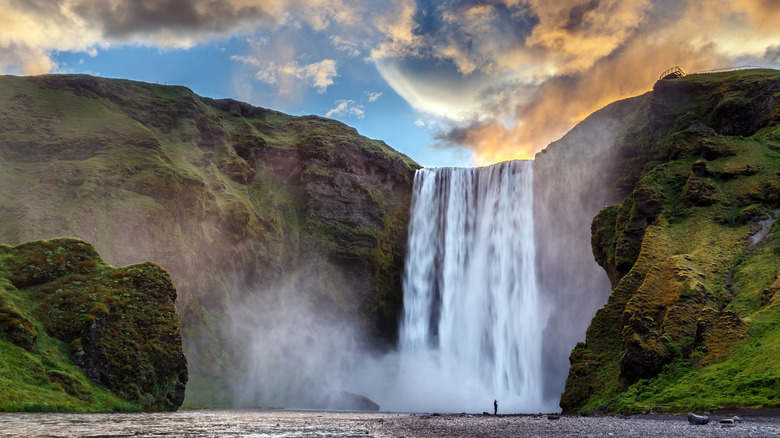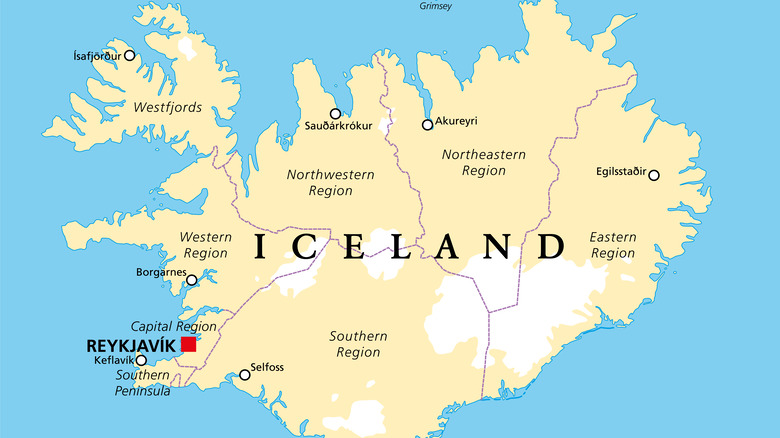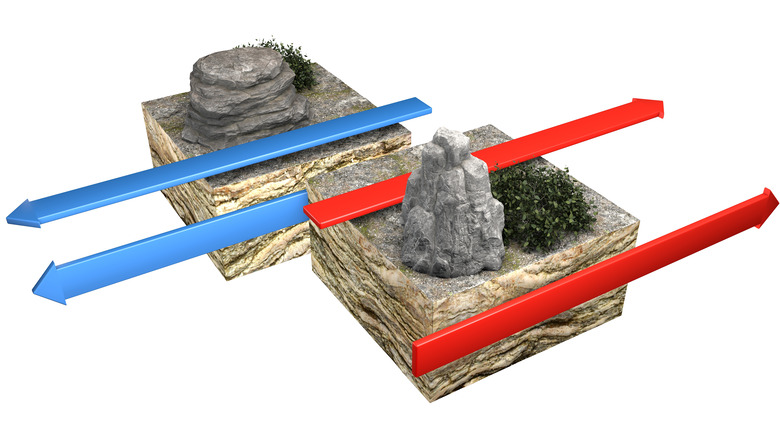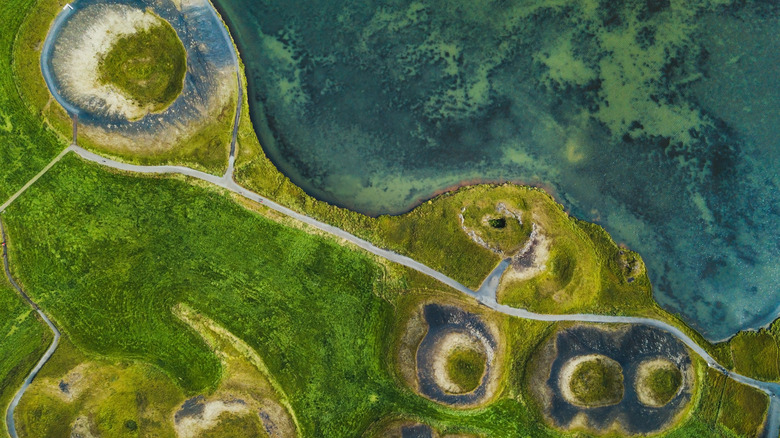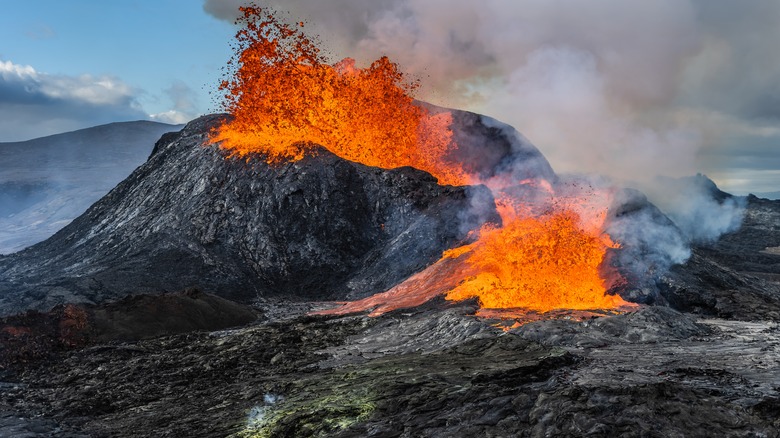Why Iceland Is Slightly Growing In Size Each Year
Aah, Iceland ... It's a globetrotter's dream destination. This Atlantic Ocean Island features some of the most spectacular views in the world. Dubbed the land of fire and ice for its scorching volcanoes and chilling glaciers situated side by side, Iceland has much to offer in terms of natural beauty (via ABC News).
The Northern Lights are highly visible along the southern edge of the Arctic Circle, where breathtaking auroras are cast into the deep Icelandic night sky (per Travel + Leisure). The views are stretching. Incidentally, so is the island country. That's right — Iceland itself is growing larger and larger every year, according to Iceland Magazine and other sources, like The Guardian. What's more, the comparatively young and active landmass is growing in more than one direction, becoming both wider and taller as land splits and moves in an upward direction.
Iceland's formation has a lot to do with this growth
To understand the growth of the island, which consists of 40,000 square miles of space to date, you must first consider the way it was formed (via Iceland.is). According to Live Science, Iceland was likely created as a result of hot lava rising out of the North Atlantic Ocean 70 million years or so ago. As scientific theory would have it, the lava rose and cooled for tens of millions of years before finally producing the large pocket of magma now situated under Iceland and serving as its foundation.
This unique formation means that Iceland is heavy in volcanic activity, sporting a surplus of more than 30 known active volcanoes as of 2022 (via Smithsonian Magazine). This gradual composition hasn't ended just because the island was formed. The country is situated over two shifting tectonic plates, and those plates are still in motion, causing the island to slowly expand at a rate of about 1 inch every year (per Live Science).
Tectonic plates beneath the island are slowly shifting in opposite directions
According to Iceland Magazine, the tectonic plates situated beneath Iceland are slowly but surely pulling apart. This process causes magma to gush from the core of the earth and create more landmass along the North Atlantic Ridge, henceforth making Iceland slightly wider. So, while the island is technically being torn, the tectonic plate separation is adding to the landmass rather than ripping it apart.
The country's National Land Survey utilizes a point system to track the shifting of these tectonic plates and to analyze how these changes impact the land (via the Government of Iceland). Current estimates suggest that Iceland is growing at a rate of approximately .8 inches per year, a phenomenon that is taking place in the center of the island where these two plates are continuously shifting. Before you envision a world millions of years in the future that consists of a vast landmass that is Iceland, however, there's another important point to consider, which is precisely how much of its landmass the island loses.
The island is growing while remaining the same size
According to Visit Iceland, the island country is eroding along its edges at a similar rate by which it is growing in the center. This means that although Iceland is technically growing as the plates beneath it drift apart, it's also pretty much staying the same size, at least in width (via Iceland Magazine). But here's where things get a bit tricky.
The Guardian reports that Iceland is not just expanding outward but also shifting upward, thanks to climate change. This is not the result of drifting tectonic plates — it is caused by melting ice caps. As these massive ice caps melt, the land underneath is uncovered and relieved of the weight of the heavy sheets of ice. This causes the landmass to move upward at a rate of approximately 1.4 inches per year (per The Guardian). While that's a gradual shift in terms of size, it's a much faster rate than scientists predicted, and the aftereffect is an increase in something much more immediate and perilous: volcanic activity.
Iceland rising means more volcanoes
According to The Guardian, climate change is causing Iceland to rise like the sea, and the consequences of this phenomenon could be pretty explosive. Here's why.
Land covered by massive ice sinks down from the weight and the pressure. When the ice melts, the land bounces back up. Geologist Richard Bennett compared this effect to removing weights from a trampoline, stating, "If you take the weights off, the trampoline will bounce right back up to its original flat shape." This doesn't sound like a big deal, but given the island's reputation for volcanoes, it could mean a drastic increase in volcanic activity as molten hot rocks head up to the surface. Phys.org reports that a similar phenomenon is believed to have taken place toward the end of the previous Ice Age when eruption rates accelerated 100-fold compared to eruptions at the beginning of the glacial period.
When all is said and done, Iceland is gaining landmass in its center and losing landmass on the sides (via Visit Iceland). It is also shifting upward ever so slightly, just enough to become a volcanic hotbed getting ready to blow.
